Preparations for the launch of Skylab, America’s first experimental space station, proceeded well in late 1972 and early 1973. A few technical issues, however, compelled NASA managers to slip the planned launch date of the Skylab workshop from April 30, 1973, to May 14, and of the first crew’s launch from May 1 to May 15. Workers in the Vehicle Assembly Building (VAB) at NASA’s Kennedy Space Center (KSC) in Florida continued parallel processing of the Saturn V rocket for the Skylab 1 space station and the Saturn IB for the Skylab 2 crew launch. They completed assembly of the space station atop the Saturn V and rolled out the Saturn IB for launch pad compatibility tests. The Skylab 2 crew of Charles “Pete” Conrad, Dr. Joseph P. Kerwin, and Paul J. Weitz and their backups Russell L. Schweickart, Dr. F. Story Musgrave, and Bruce McCandless continued training for their planned 28-day mission aboard the space station.
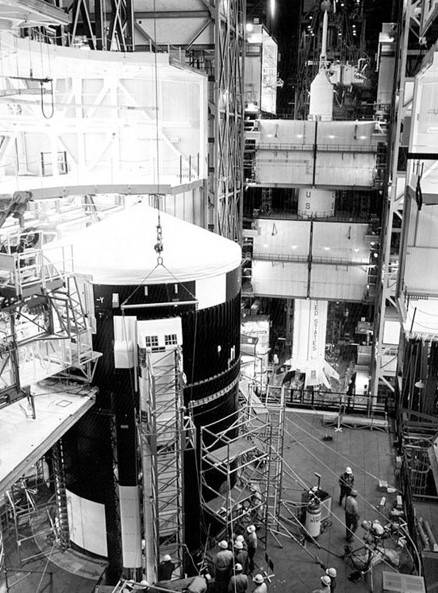
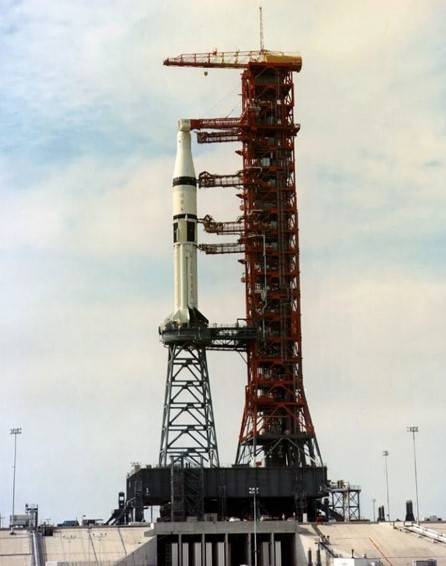
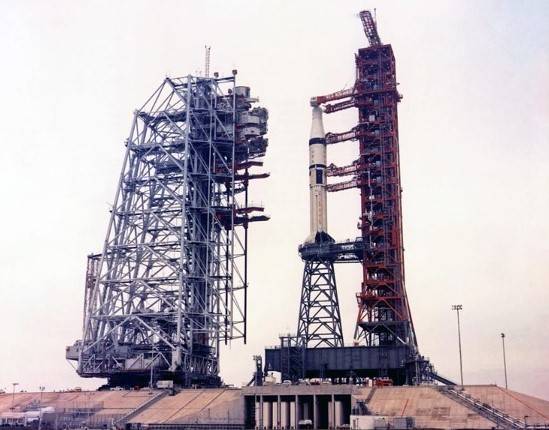
Left: In the Vehicle Assembly Building at NASA’s Kennedy Space Center in Florida, workers install one of the solar array wings on the Skylab Orbital Workshop, left, with the Saturn IB rocket visible in the background. Middle: The Saturn IB rocket for the first Skylab crew arrives at Launch Pad 39B for its first rollout. Right: Workers roll the Mobile Service Structure around the Saturn IB rocket.
Although processing for the launch vehicles for the Skylab 1 workshop and the Skylab 2 first crew mission as well as the Command and Service Module (CSM) proceeded well in late 1972 and early 1973, a few minor issues led NASA managers on Jan. 15, 1973, to announce a delay of two weeks for the dual launches. The Skylab 1 launch slipped from April 30 to May 14, and the Skylab 2 crew launch from May 1 to May 15, planned for 24 hours after the space station reached orbit. Workers in KSC’s VAB continued processing the Saturn V rocket for the Skylab 1 workshop and the Saturn IB vehicle for Skylab 2, the first crew to fly to the station. This marked the first and only time the VAB hosted two different Saturn rockets simultaneously. The VAB hosted two dissimilar rockets simultaneously only one other time, in 2009, when workers assembled the uncrewed Ares I-X rocket and the space shuttle Atlantis for the STS-129 mission. In the VAB’s High Bay 1, workers had topped the Saturn IB rocket, sitting on its “milkstool” pedestal, with the BP-30 boilerplate CSM Facility Verification Vehicle and a stub Launch Escape System tower. On Jan. 9, they rolled the vehicle to Launch Pad 39B, the first use of that facility since Apollo 10 in May 1969, for a complete test and checkout very similar to a Countdown Demonstration Test. The test confirmed the interfaces between the launch tower and the Saturn IB sitting on the milkstool, including the modified platforms on the Mobile Service Structure (MSS) to accommodate the rocket’s S-IB first stage. The MSS rolled to the launch pad on Jan. 11. Workers completed another major activity, the Propellant Loading All Systems Test, on Jan. 30, and rolled the vehicle back to the VAB on Feb. 2.
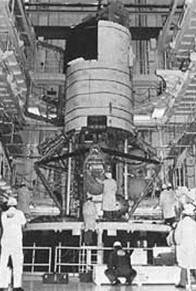
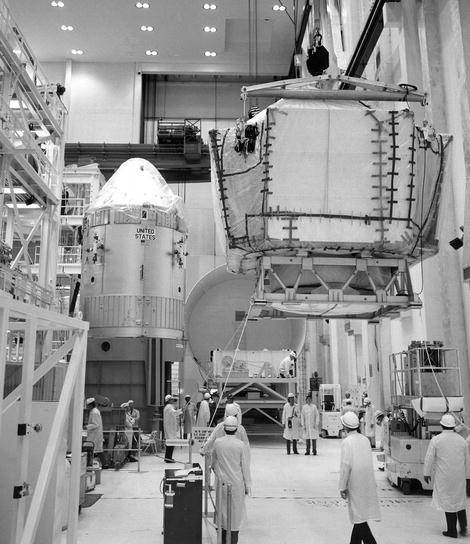
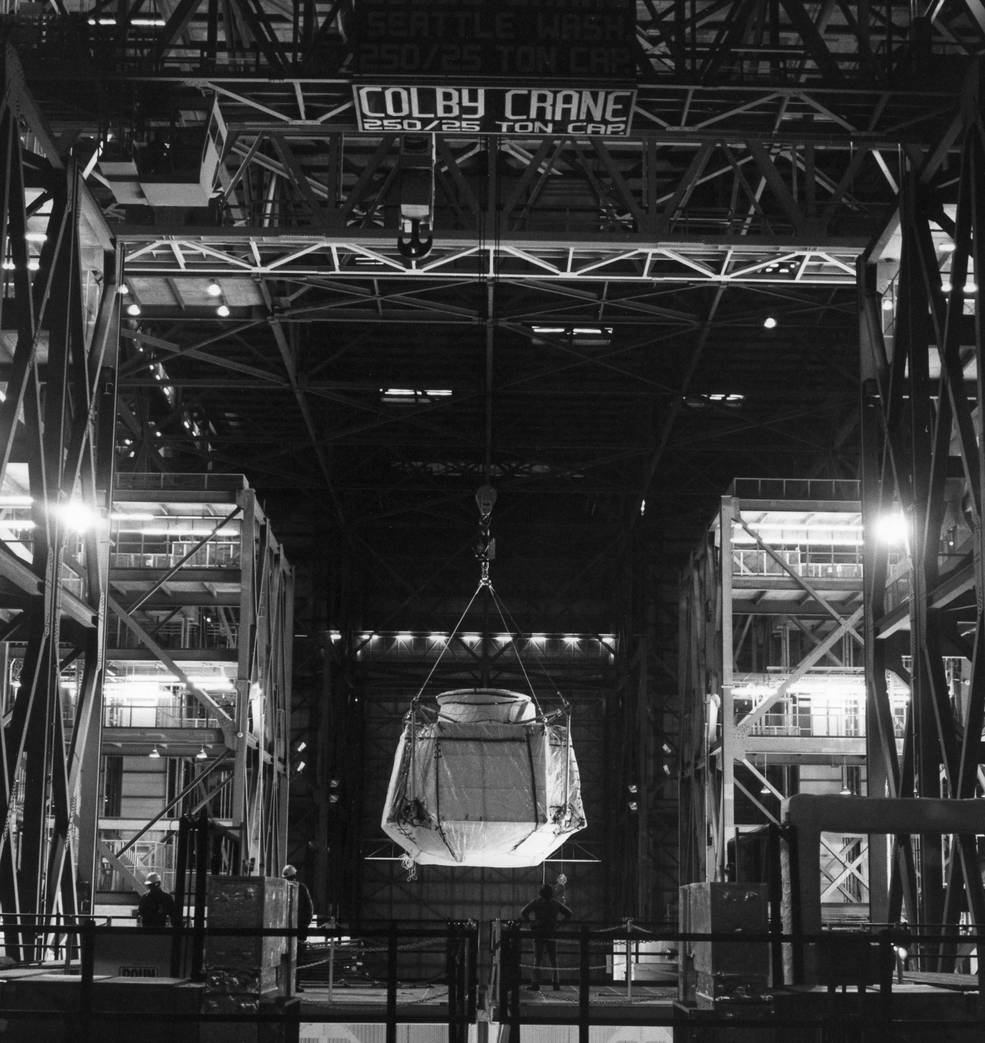
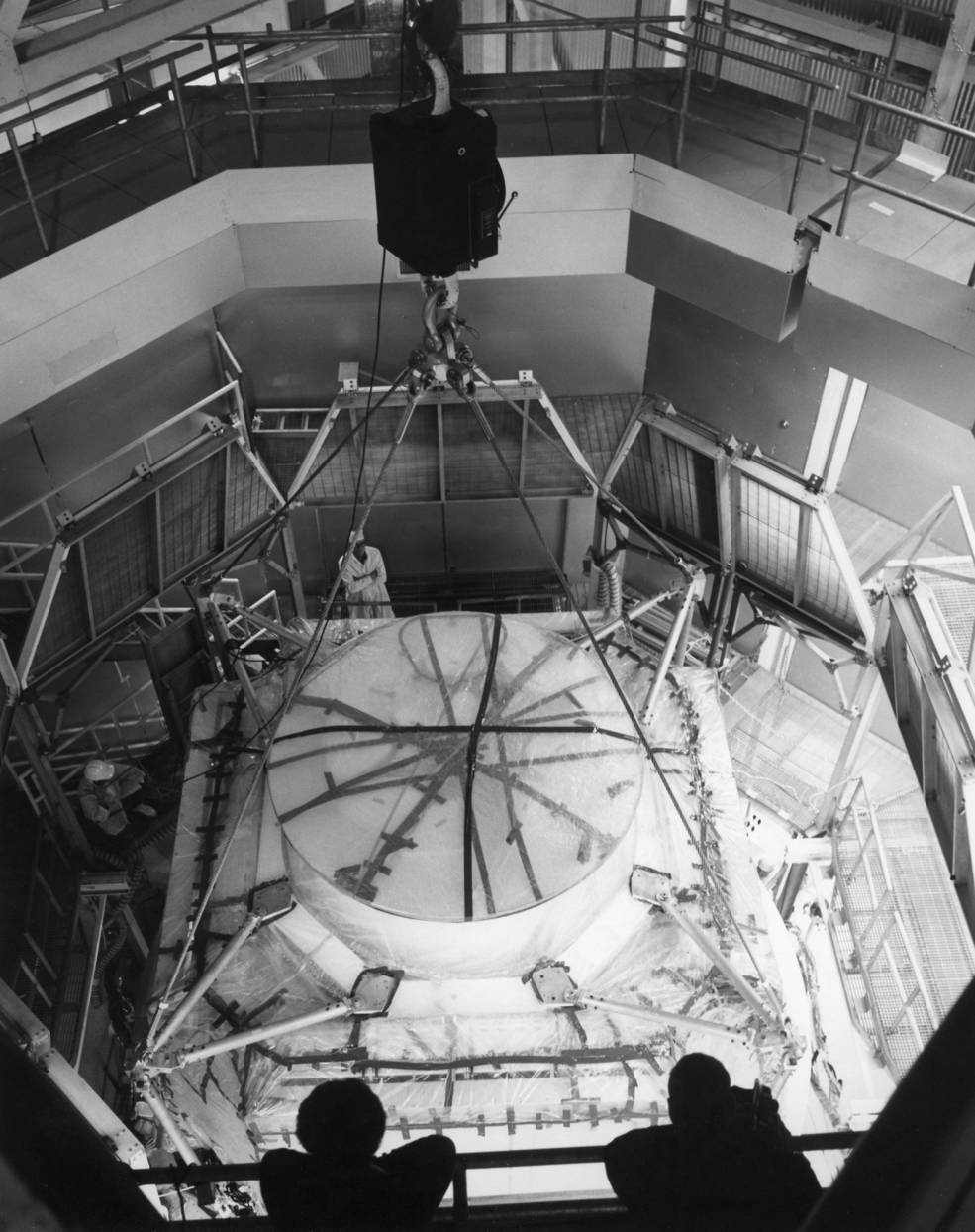
Left: The Skylab Airlock Module and Multiple Docking Adapter during testing in the Manned Spacecraft Operations Building at NASA’s Kennedy Space Center in Florida. Middle left: Workers in the MSOB prepare to move the Skylab Apollo Telescope Mount (ATM), right, to the Vehicle Assembly Building (VAB), while engineers prepare the Skylab 2 Command and Service Module, left. Middle right: Workers in the VAB prepare to lift the ATM to stack it atop the Saturn V carrying the Skylab workshop. Right: Workers stack the ATM atop the Skylab complex.
Elsewhere at KSC, workers in the Manned Spacecraft Operations Building (MSOB) continued preparations of Skylab space station components and the CSM for the Skylab 2 crew. In December 1972, engineers completed a docking test between the CSM and the combined Airlock Module (AM)/Multiple Docking Adapter (MDA). Between Jan. 29 and 31, workers transported the AM/MDA and the Apollo Telescope Mount from the MSOB to the VAB and completed stacking of the components with the Skylab Orbital Workshop and its Saturn V rocket in High Bay 2.
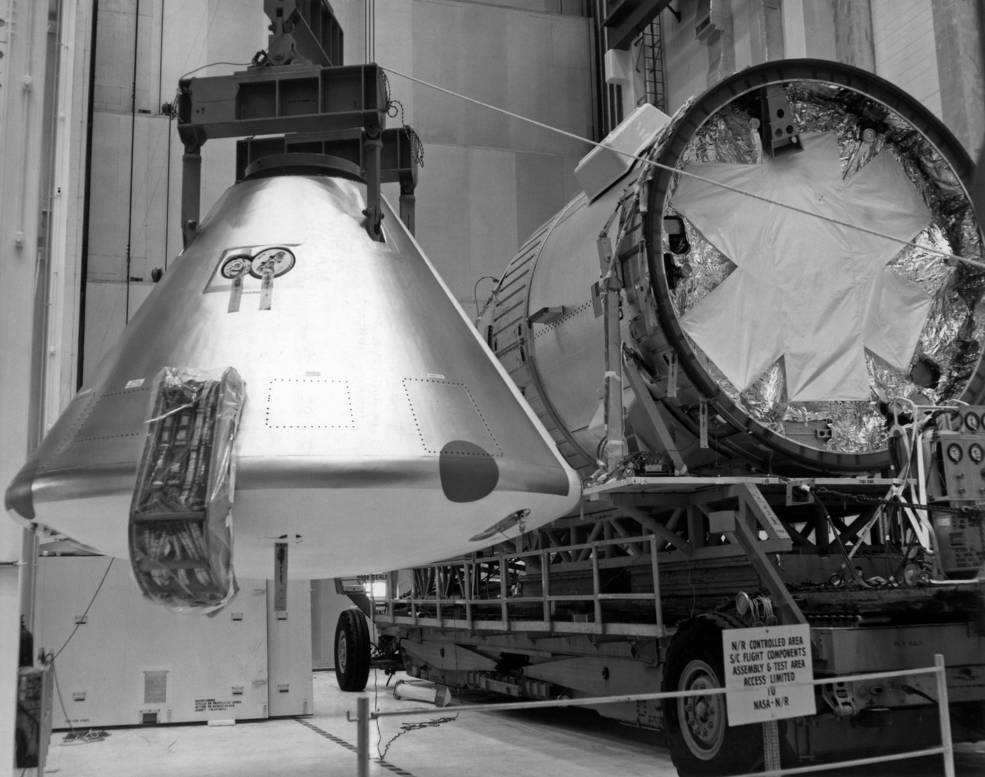
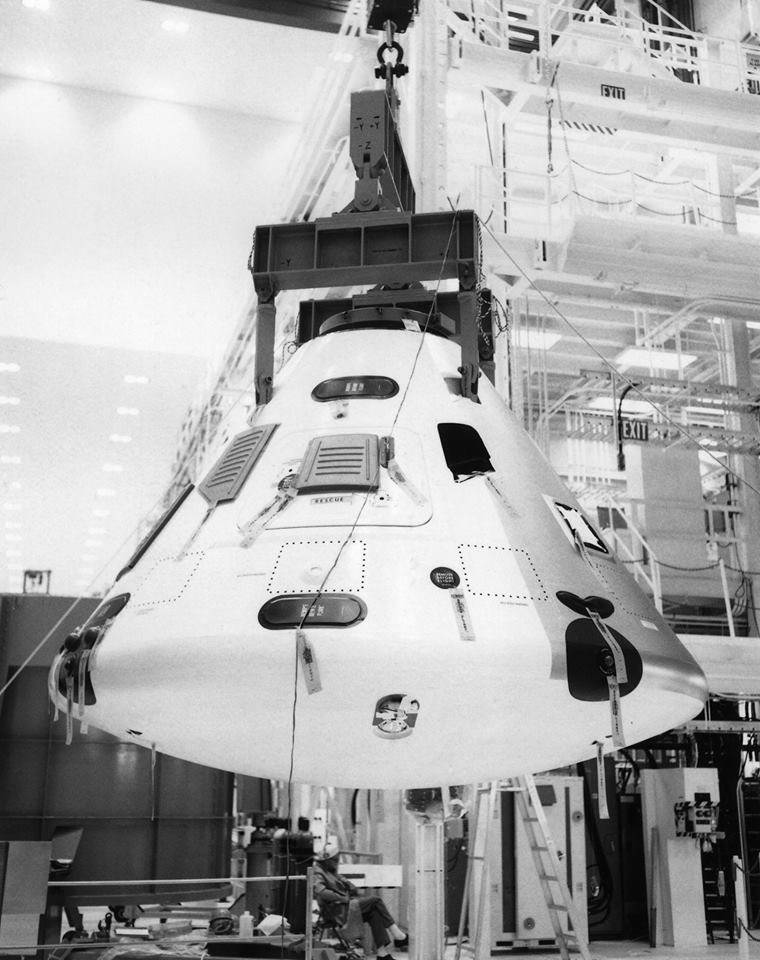
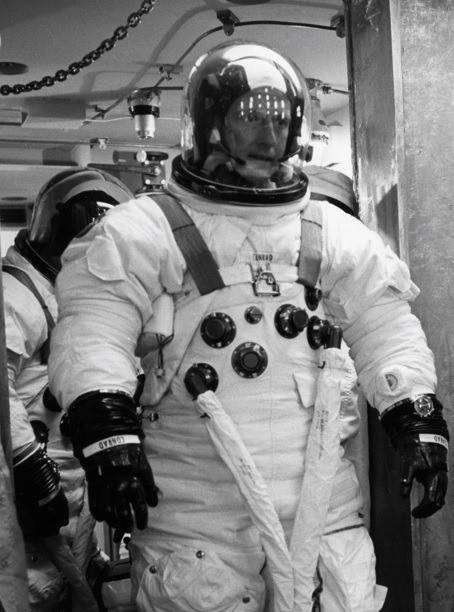
Left: The Skylab 2 Command Module (CM), left, and Service Module after their arrival in the Manned Spacecraft Operations Building (MSOB) at NASA’s Kennedy Space Center in Florida. Middle: Workers in the MSOB transfer the Skylab 2 CM to a vacuum chamber. Right: Skylab 2 astronaut Charles “Pete” Conrad prepares to enter the CM for an altitude test.
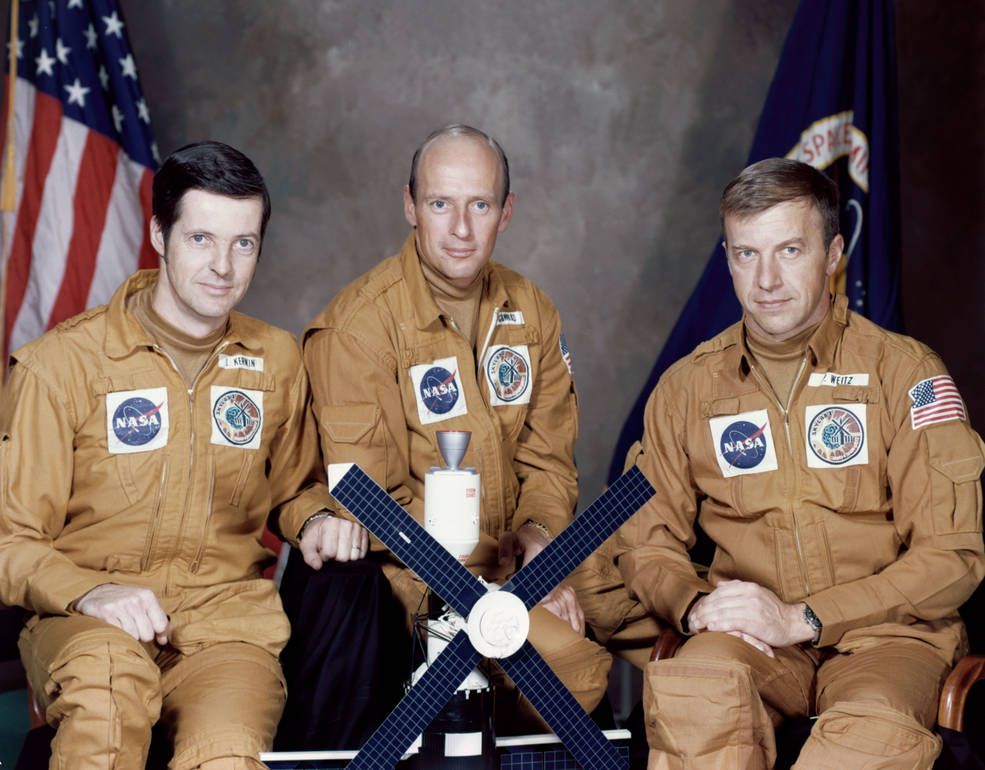
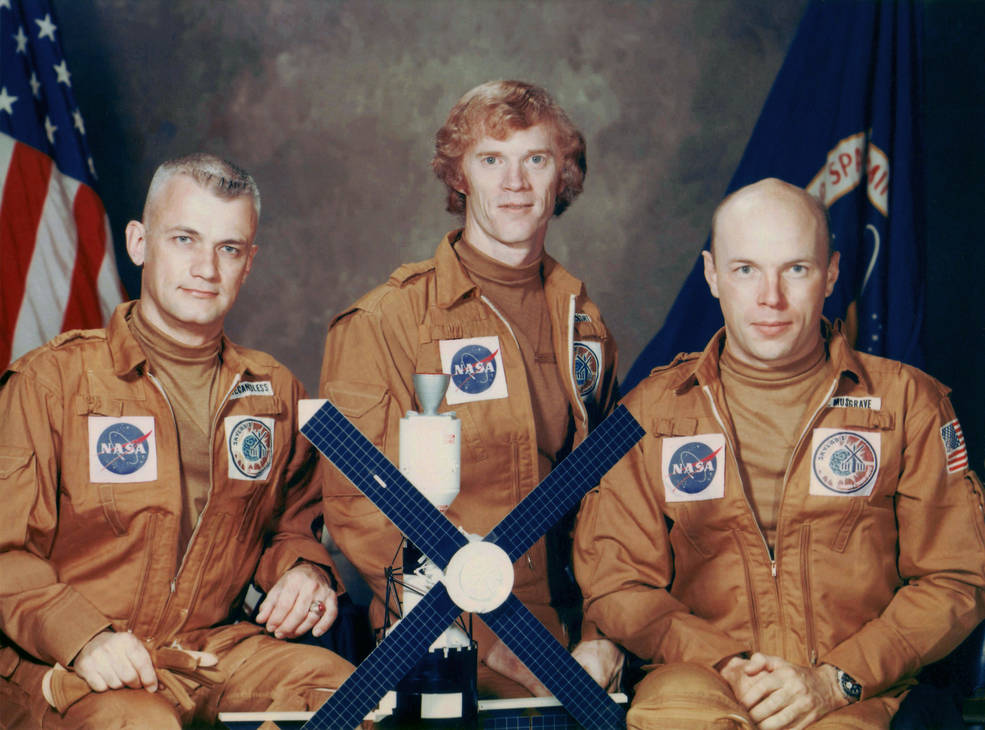
Left: The Skylab 2 prime crew of Dr. Joseph P. Kerwin, left, Charles “Pete” Conrad, and Paul J. Weitz. Right: The Skylab 2 backup crew of Bruce McCandless, left, Russell L. Schweickart, and Dr. F. Story Musgrave.
Following the docking test, on Dec. 20, 1972, workers moved the Skylab 2 CSM to an altitude chamber for further testing. The Skylab 2 prime crew of Conrad, Kerwin, and Weitz completed a simulated altitude test on Jan. 8, followed the next day by the backup crew of Schweickart, Musgrave, and McCandless. The two crews completed actual altitude tests in the spacecraft on Jan. 17 and 19, respectively. Ten days later, workers removed the spacecraft from the altitude chamber to install its Service Propulsion System engine nozzle, in preparation for mating with the Spacecraft Lunar Module Adapter and rollover to the VAB in February.
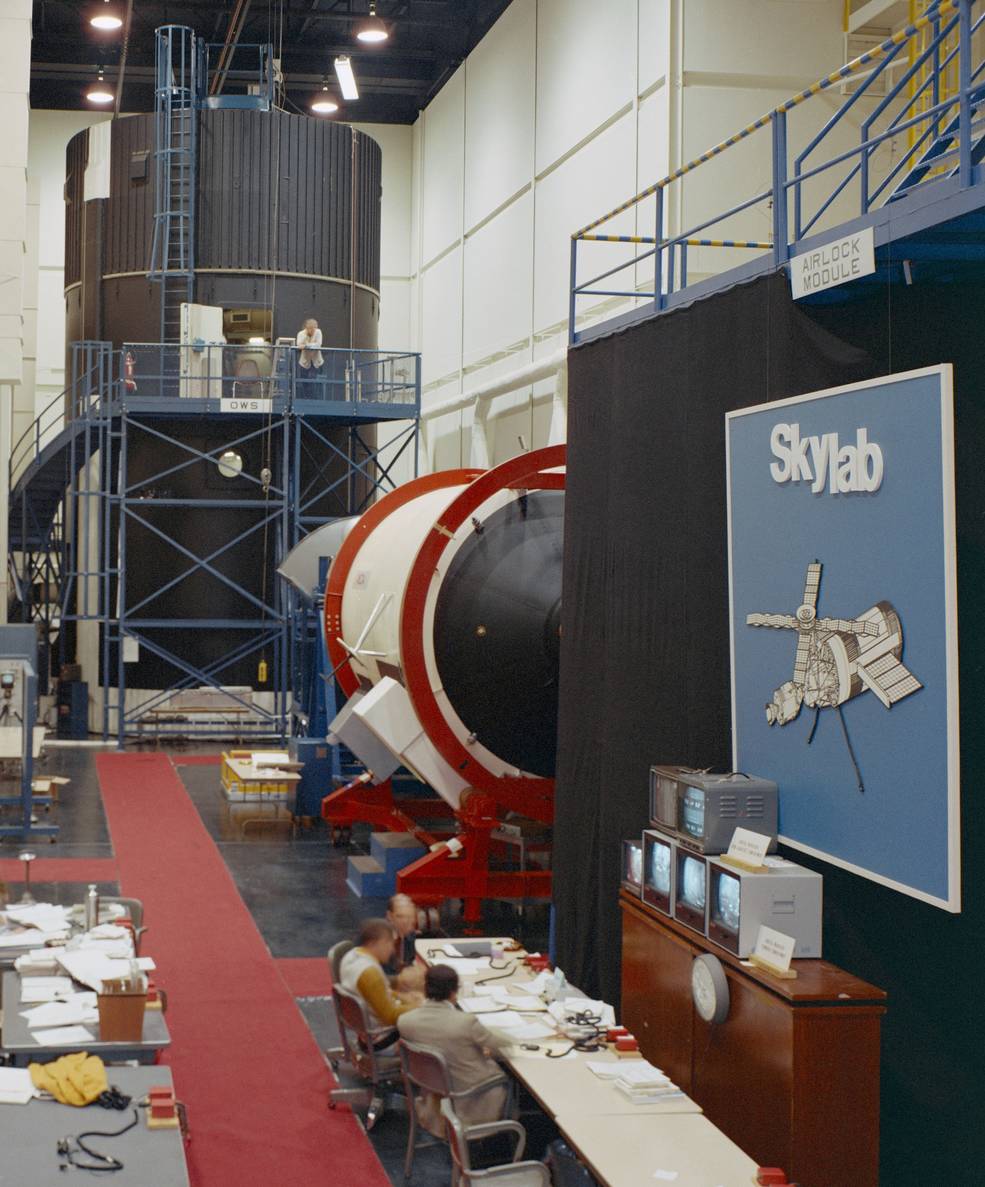
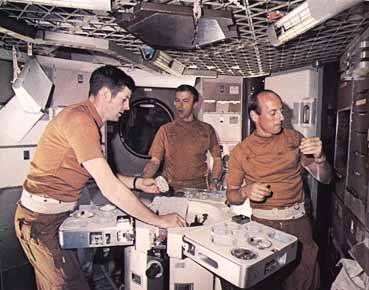
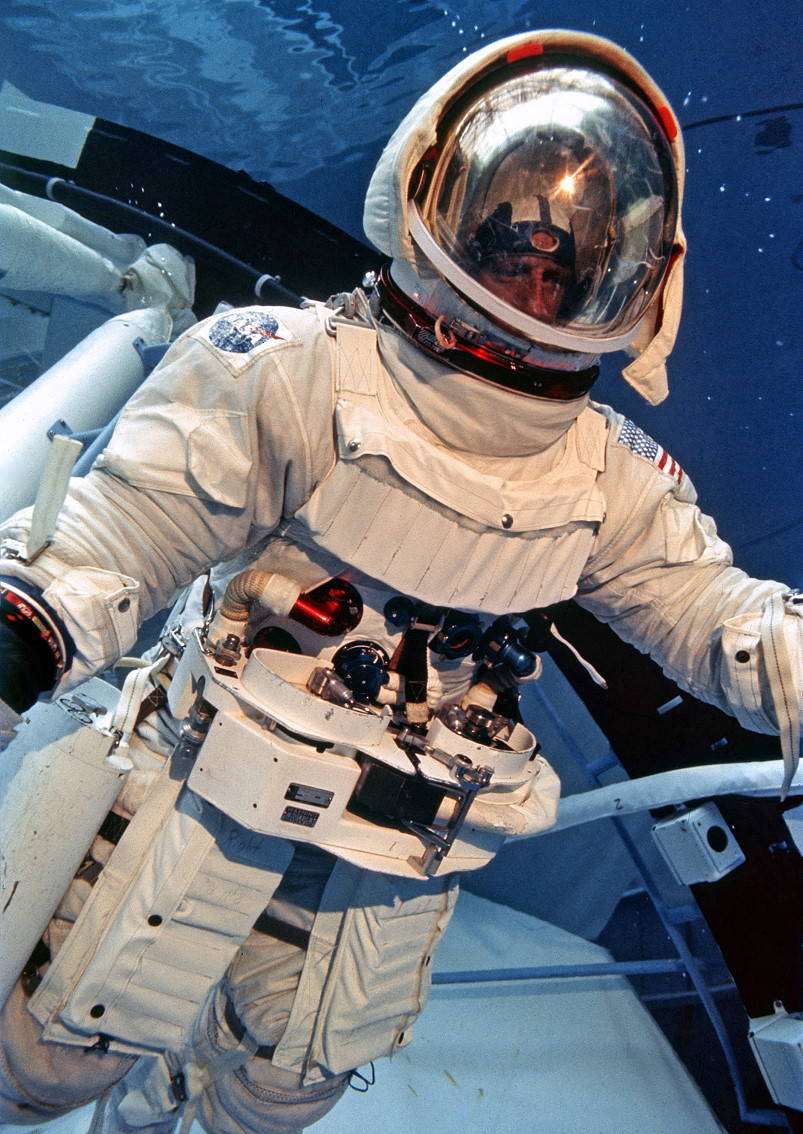
Left: Skylab trainers in the Mission Simulator and Training Facility at the Manned Spacecraft Center, now NASA’s Johnson Space Center in Houston. Middle: Skylab 2 astronauts Dr. Joseph P. Kerwin, left, Paul J. Weitz, and Charles “Pete” Conrad around the wardroom table in the Skylab Orbital Workshop trainer. Right: Conrad practices spacewalking in the Neutral Buoyancy Simulator at NASA’s Marshall Space Flight Center in Huntsville, Alabama.
In addition to the altitude chamber runs, the Skylab 2 crews participated in other training activities. Between Jan. 17 and 19, they took part in a three-day simulation of living and working aboard Skylab, with particular emphasis on the science experiments. Using the Skylab trainers in the Mission Simulator and Training Facility (Building 5) at the Manned Spacecraft Center (MSC), now NASA’s Johnson Space Center in Houston, the astronauts rehearsed the onboard timeline beginning on the 10th mission day, monitored by teams of controllers at the MSC’s Mission Control Center, and principal investigators staffing the science support rooms. The Huntsville Operations Support Center at NASA’s Marshall Space Flight Center in Huntsville, Alabama, provided support for the workshop systems. The astronauts practiced the planned spacewalks to replace film cassettes in the ATM in Marshall’s Neutral Buoyancy Simulator, a 40-foot deep and 75-foot diameter circular water tank with a mockup of the space station placed inside.
To be continued …
World events in January 1973:
January 1 – The United Kingdom, Ireland, and Denmark become the 7th, 8th, and 9th members, respectively, of the European Common Market.
January 5 – Columbia Records releases Bruce Springsteen’s debut album “Greetings from Asbury Park, N.J.”
January 6 – “Schoolhouse Rock” premieres on ABC with Multiplication Rock.
January 8 – Judge John J. Sirica begins the trial of the Watergate burglars in Washington, D.C.
January 16 – NBC presents the 440th and final showing of the western series “Bonanza.”
January 16 – The Soviet Union’s Lunokhod 2 eight-wheeled rover begins exploring the Moon’s surface.
January 20 – President Richard M. Nixon’s second inauguration.
January 23 – President Nixon announces an agreement to end the Vietnam War.
John Uri
NASA Johnson Space Center
























